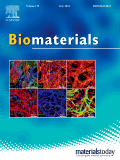Posted on September 15, 2013
Source: Biomaterials

Laura M.Ensign, Timothy E.Hoen, Katharina Maisel, Richard A.Cone, Justin S.Hanes
Mucosal epithelia use osmotic gradients for fluid absorption and secretion. We hypothesized that administration of hypotonic solutions would induce fluid uptake that could be advantageous for rapidly delivering drugs through mucus to the vaginal epithelium. We found that hypotonic formulations markedly increased the rate at which small molecule drugs and mucoinert nanoparticles (mucus-penetrating particles, or MPP), but not conventional mucoadhesive nanoparticles (CP), reached the vaginal epithelial surface in vivo in mice. Additionally, hypotonic formulations greatly enhanced drug and MPP delivery to the entire epithelial surface, including deep into the vaginal folds (rugae) that drugs or MPP in isotonic formulations failed to reach efficiently. However, hypotonic formulations caused unencapsulated “free” drugs to be drawn through the epithelium, reducing vaginal retention. In contrast, hypotonic formulations caused MPP to accumulate rapidly and uniformly on vaginal surfaces, ideally positioned for localized sustained drug delivery. Using a mouse model of vaginal genital herpes (HSV-2) infection, we found that hypotonic delivery of free drug led to improved immediate protection, but diminished longer-term protection. In contrast, as we previously demonstrated, hypotonic delivery of drug via MPP led to better long-term retention and protection in the vagina. Importantly, we demonstrate that slightly hypotonic formulations provided rapid and uniform delivery of MPP to the entire vaginal surface, thus enabling formulations with minimal risk of epithelial toxicity. Hypotonic formulations for vaginal drug delivery via MPP may significantly improve prevention and treatment of reproductive tract diseases and disorders.